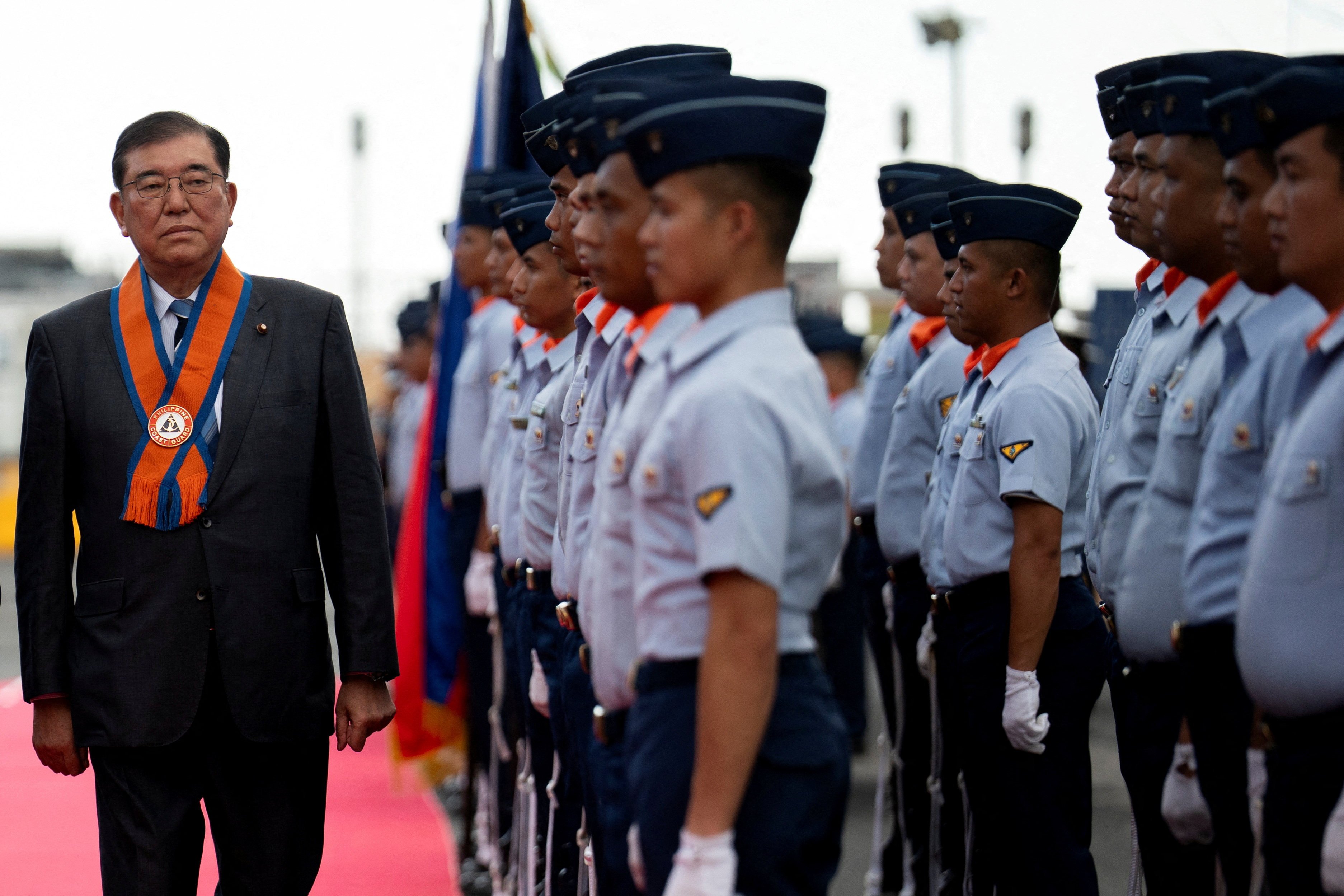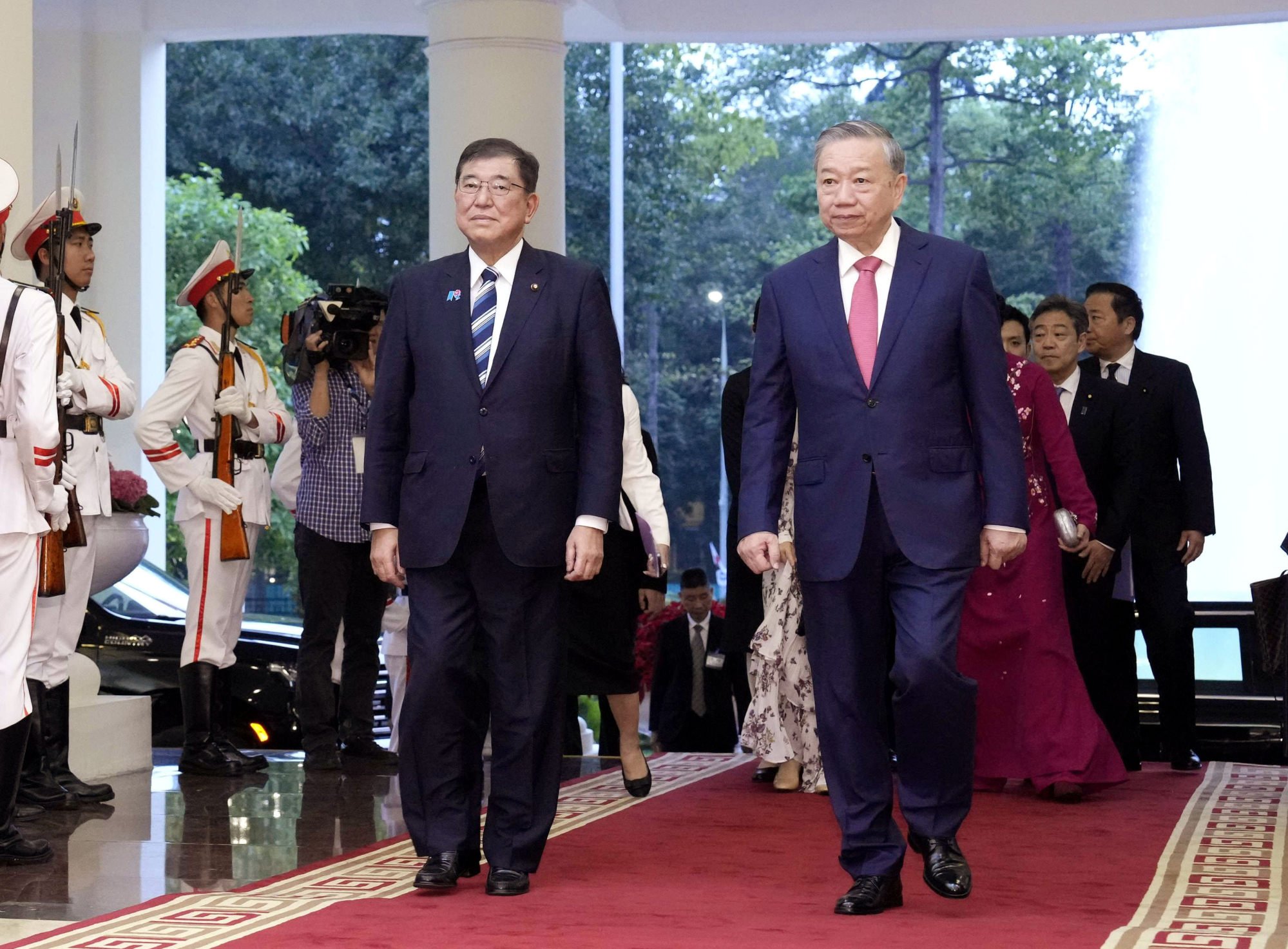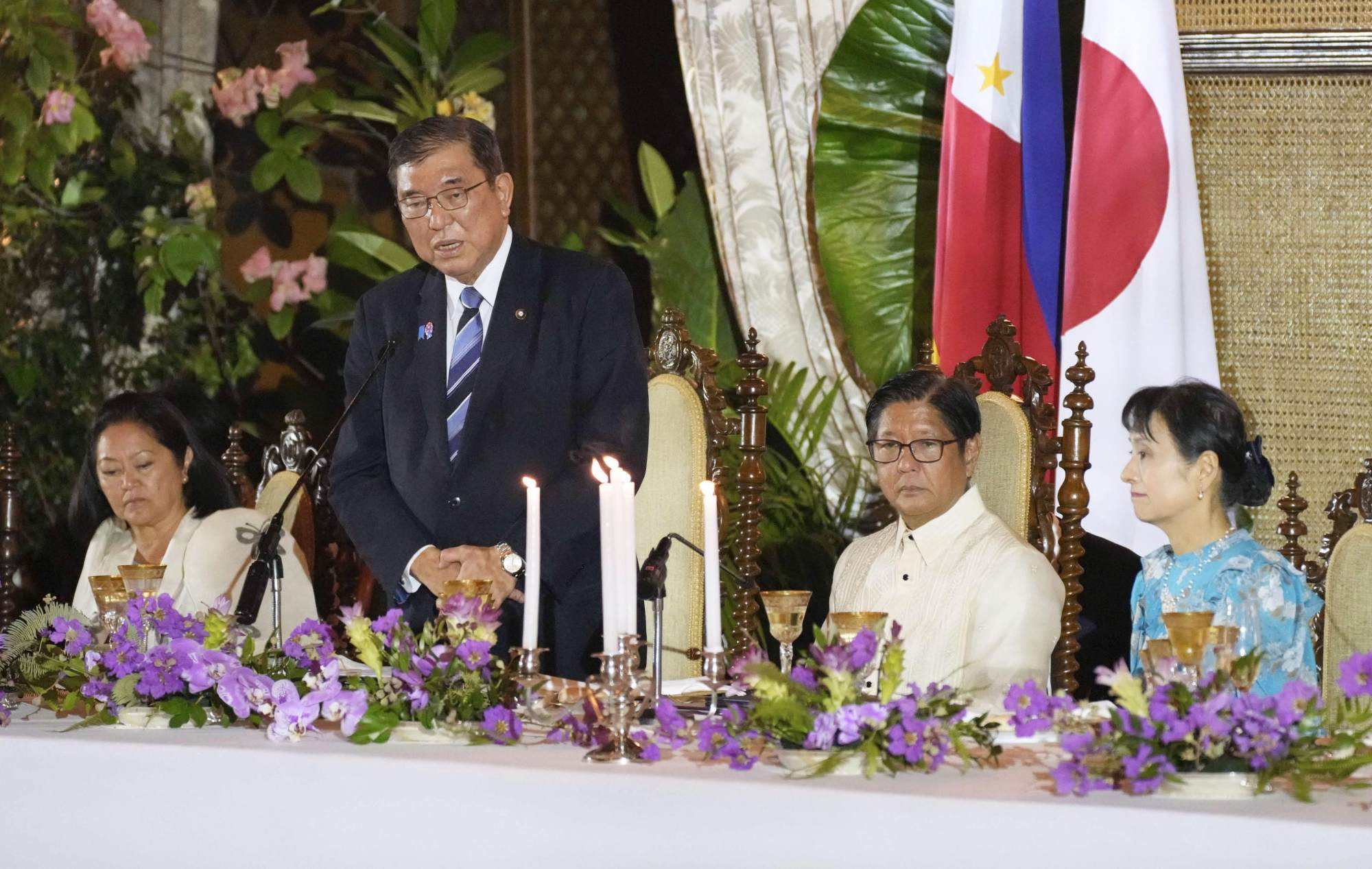Japan seeks regional sway as PM Ishiba courts Vietnam, Philippines on trade and security
Ishiba’s visits follow Chinese President Xi Jinping’s own tour of the region, reflecting a broader competition for influence

Japan’s Prime Minister Shigeru Ishiba’s visit to two Southeast Asian countries this week signals Tokyo’s desire to “strongly anchor” itself in the region and “reassure” Vietnam and the Philippines of its support amid growing Chinese maritime assertiveness, analysts have said.
After Ishiba’s meeting with Vietnamese leaders in Hanoi this week, both sides agreed to boost bilateral trade, deepen political and security ties, and uphold global rules on the free flow of goods.
“The world economy is becoming more uncertain, and the impact on the Southeast Asian region is also becoming apparent,” Ishiba told reporters on Monday after a meeting with Vietnam’s Prime Minister Pham Minh Chinh.
“We will cooperate to maintain a free and open international order based on the rule of law,” Ishiba added.
Vietnam’s top leader To Lam urged Japan to increase investment in infrastructure projects after he met Ishiba on Sunday, according to a report on the Hanoi government’s portal.
The leaders of Japan and the Philippines agreed on Tuesday at the start of discussions to pave the way for major security pacts, aiming to further strengthen their defence ties with China in mind.
After meeting Philippine President Ferdinand Marcos Jnr in Manila on Tuesday, Ishiba said the two countries would initiate talks on an intelligence-sharing deal and enter negotiations to sign a pact to facilitate joint defence drills.
At a joint press conference with Marcos Jnr, Ishiba said they reaffirmed their opposition to “attempts to change the status quo in the East and South China seas by force or coercion” – a remark widely seen as a reference to Beijing’s growing assertiveness in the disputed waters.
The two leaders also vowed to start negotiations on an Acquisition and Cross-Servicing Agreement (ACSA), aimed at strengthening economic collaboration and enhancing supply chain resiliency.
Ishiba’s visit comes on the heels of Chinese President Xi Jinping’s trip to Southeast Asia last month, in which he visited Vietnam, Malaysia and Cambodia, leading to the signing of more than 100 documents of cooperation.
Kei Koga, an associate professor in public policy and global affairs at Singapore’s Nanyang Technological University, said Ishiba’s visit was aimed at reassuring Southeast Asian countries that, despite Tokyo’s close alliance with the United States, its diplomatic focus remained “strongly anchored in the region”.
Given the uncertainty surrounding US President Donald Trump’s return to office, an “increasingly assertive” China might see an opening to undermine confidence in US commitment to the region, Koga said.

“Japan aims to engage Southeast Asian states, particularly Vietnam and the Philippines, in discussions on how to jointly navigate emerging economic and strategic challenges,” Koga said.
He added that Japan remains proactive in promoting economic multilateralism through frameworks such as the Comprehensive and Progressive Agreement for Trans-Pacific Partnership (CPTPP), a major regional trade pact, and the Official Security Assistance (OSA) programme.
“Japan maintains a competitive edge over other external powers,” Koga said.
Established in 2023, the OSA is aimed at strengthening the security and deterrence capabilities of like-minded countries by providing financial help, military equipment and supplies. Countries selected to receive OSA include the Philippines, Indonesia, Mongolia and Djibouti.
Mark Cogan, an associate professor at Kansai Gaidai University, said Ishiba’s visit was also aimed at “reassuring” both Hanoi and Manila in light of China’s recent actions to assert control over Sandy Cay – a disputed sandbank in the South China Sea located near the Philippines’ Thitu Island.
“Ishiba wants to impress upon both that joint security cooperation is in their mutual interests,” Cogan said, noting that “Japan wants to see that Hanoi remains within its limited sphere of influence”.

Tokyo also wants to push Vietnam towards broader security cooperation, including defence equipment and technology transfers under the OSA programme, Cogan said.
“The agreement that Japan reached with Vietnam [this week] is limited to AI, disaster risk reduction, and green transitions, but that’s in line with Japan’s long game as being seen as a reliable regional partner,” Cogan added.
Saya Kiba, an associate professor of international relations at the Kobe City University of Foreign Studies, said Japan remains “attractive” to Southeast Asia as an economic and security partner as it values its partners’ autonomy.
“It will never force Southeast Asian countries to choose sides between the US and China, or Japan and China,” she said.
While Japan’s Self-Defence Forces are legally restricted in their overseas military engagement, Kiba said they could nonetheless “supplement the ambiguity of the US presence and commitment” in Southeast Asia.
Washington has often been seen as lacking in commitment when it comes to Southeast Asia, with American presidents often skipping regional meetings in the past.
US economic influence in Southeast Asia waned after Washington’s 2017 withdrawal from the Trans-Pacific Partnership (TPP), a trade deal that would have anchored the US further in the region.
Apart from the baseline 10 per cent tariff the US has imposed on all imports – with steeper, country-specific tariffs suspended until July pending negotiations – the dismantling of US foreign aid programmes has further underscored Washington’s waning humanitarian commitment to Southeast Asia.
“Southeast Asia is Japan’s top priority region and most important partner,” Kiba added.